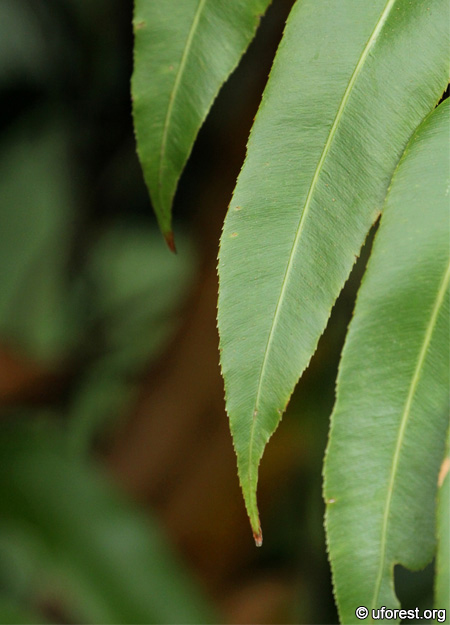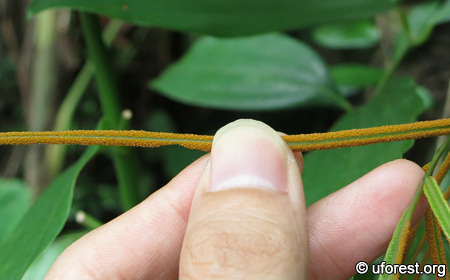| Etymology | Genus | Narrow cloak, referring to the fertile frond packed with sporangia |
|---|---|---|
| Species | Swampy or marshy, in reference to its preferred habitat | |
| Family | Blechnaceae | |
| Synonyms | Polypodium palustre Burm. f. | |
| Common Names | Climbing Fern | |
| Status | Native: Common | |
| Form | Creeper or Climber | |
| Native Distribution | India, throughout Southeast Asia, Australia, and Polynesia | |
Diagnostics:
Among the climbing ferns with similar frond form, the serrated margins of Stenochlaena palustris will help to differentiate it apart from the rest. The young fronds are reddish.
Interesting Facts:
Stenochlaena palustris is a very common fern in Singapore, and can be found in sunny areas with rather wet medium (Holttum, 1964). The rhizomes are long and creeping, often forming dense thickets. It also climbs up trees when the rhizome reaches the stem.
The fertile fronds have very narrow leaf blades and the sporangia runs in two lines along the margin. They are produced in response to dry weather, though the wet season would have arrive by the time the fronds emerge and mature (Holttum, 1964).

Sterile, pinnately compound frond with sharp tips.

Note the serrated margin, an easy diagnostic of this fern.

Stenochlaena palustris can form dense thickets on forest edges.

The fertile fronds have very narrow leaf blades.

The densely packed orange spores cover the underside.
References
Holttum RE. (1964) Plant Life in Malaya. Longmans, Green and Co, London. 254 pp.Author: Siyang
Posted: 2012-11-14 / Modified: 2018-11-27